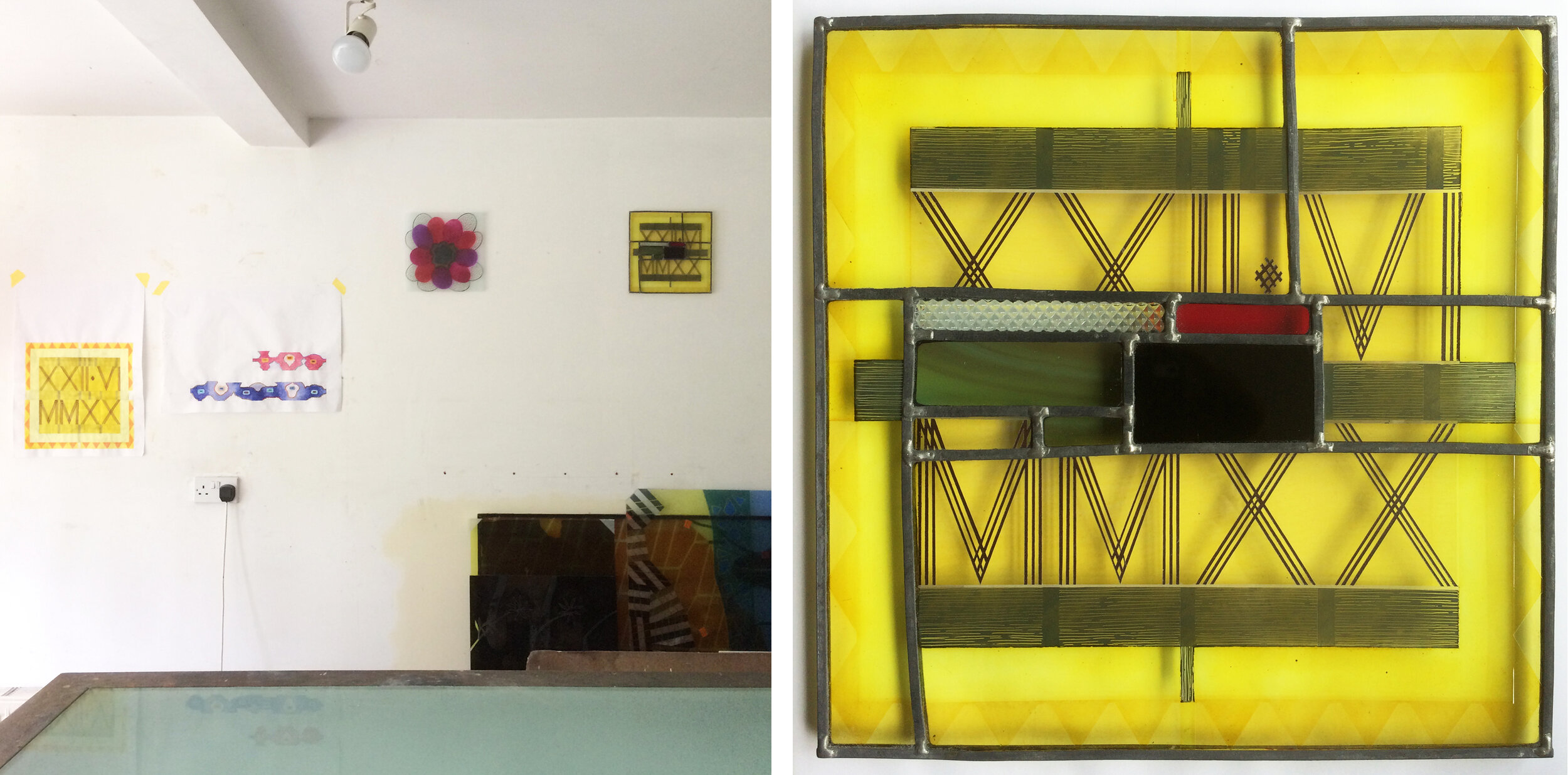Left, palette with unfired enamel paint. Right, glass scraps painted with two enamel colours and fired.
For a recent commission I had to make a lot of colour samples using transparent glass enamel mixed with a drop of lavender oil and another of gum arabic in the traditional way. With the leftover paint I coated rectangles of glass with two colours against each other and once fired, saved them in a box. The next stage, cutting them up then leading them together to make something satisfactory, proved harder than I thought.
Scraps cut up and arranged to make scrap panels 1, 2 and 3.
My first idea was to make exuberant curved shapes with background pieces cut on the slant (scrap panel 1 above and below). The offcuts from the slanted pieces made an effortless triangle panel (scrap panel 2 above & below). I shouldn’t have been surprised that panel no 2 was so much better than panel no 1, as I wasn’t trying too hard - always a recipe for disaster. There was too much yellow in no 1, so panel no 3 (above right) was an attempt to deal with the yellow by making it the spine of the piece and using the colours in a more ordered way.
Scrap panels completed, top panels 1 & 2. Bottom panels 3 & 4.
The original format of panel no 3 looked very clumsy, so I cut it down to make a smaller panel no 3 (above right). Finally, to emphasise the original idea of the two enamel colours coming together on one piece, like a simple flag or landscape design, I made panel panel no 4 (above left) where the bands of complimentary colours frame other painted and sandblasted scraps from one of my many boxes of broken glass and sample pieces.



















